Molly Crocker contacted me to ask for my opinion on her finger counting ideas 1 to 99. I decided to take the opportunity and review different techniques to teach counting. The questions you should ask in selecting a technique for your classroom:
- Does the technique highlight the structure of our base 10 number system?
- In the future, will the technique help students step count by 1,10,100,1000?
- In the future, will the technique help students add and subtract?
- Will it work in the classroom?
Not Recommended: As it counts some videos emphasize the 10s. This is a good first step. You will find many counting videos like this one just go through the numbers one after another with no differentiation. These videos sound like run-on sentences. Yuck.
However, none of these videos can compare with the two recommended ways of teaching counting because they offer no insight on addition / subtraction by 10.
Not Recommended: This is the standard way to teach counting in the West. When I was in a 5 year old in Northern Ireland I remember being punished for completing the table ahead of the teacher. She wanted to complete it - not as I had done it and not as is done in the upper left video, but by emphasizing the 10s and 5s. My teacher wrote out the first couple of rows and then worked down 10, 20, 30, 40, 50... 100. Then she went down the 5s column. She was correct and I was wrong. The structure in this table needs to be emphasized at every opportunity.
It is superior to the abacus because 100 numbers are simultaneously visualized. Their relationships to one another can be intuitively grasped.
A disadvantage is that zero is easy to mention in all the other techniques except the 1-100 chart.
Recommended: Zero is so important that I will only recommend wall charts that go 0-99. The 0-99 wall chart has the added advantage of emphasizing the 10s even more since each row has the same number of 10s.
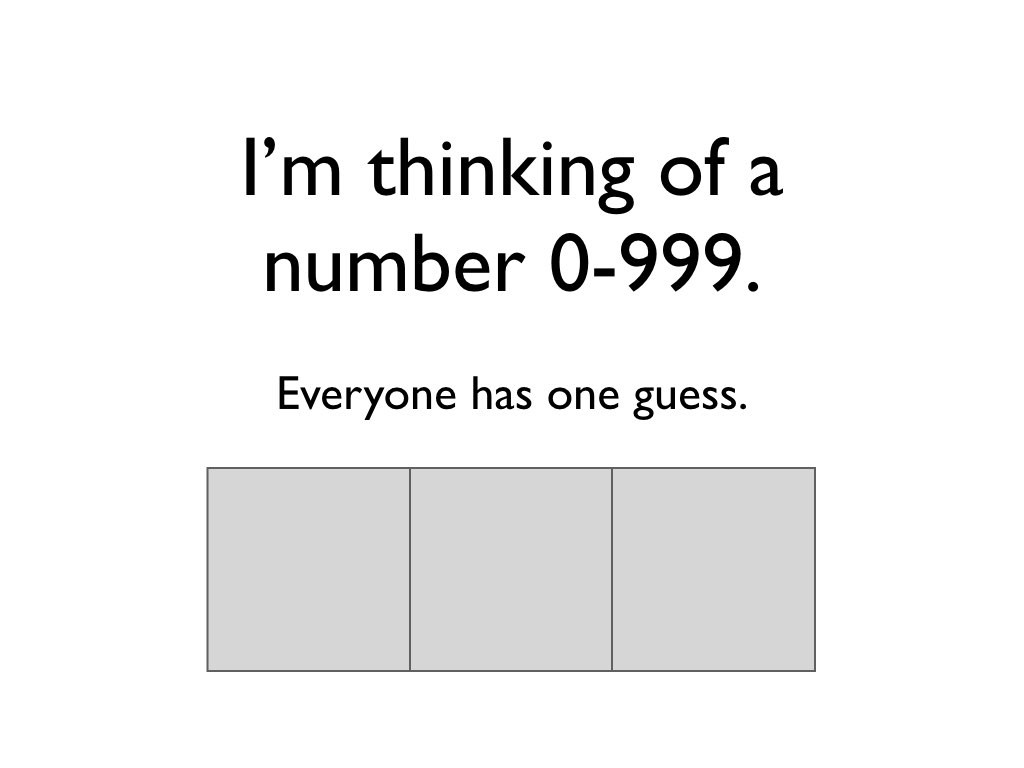
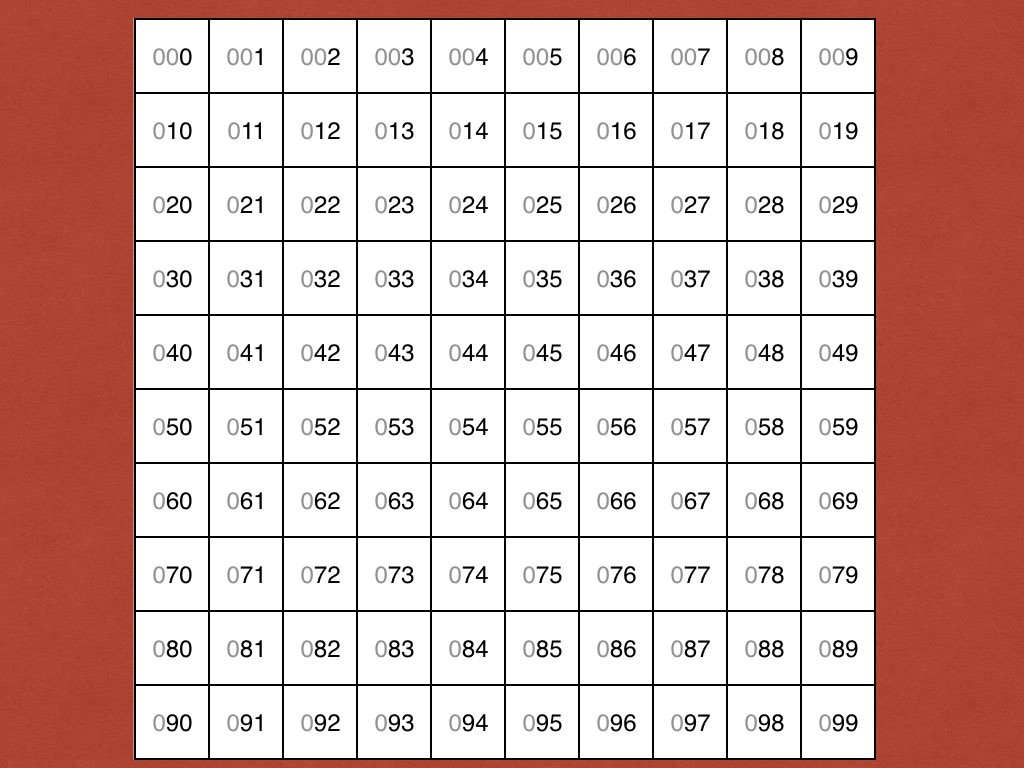
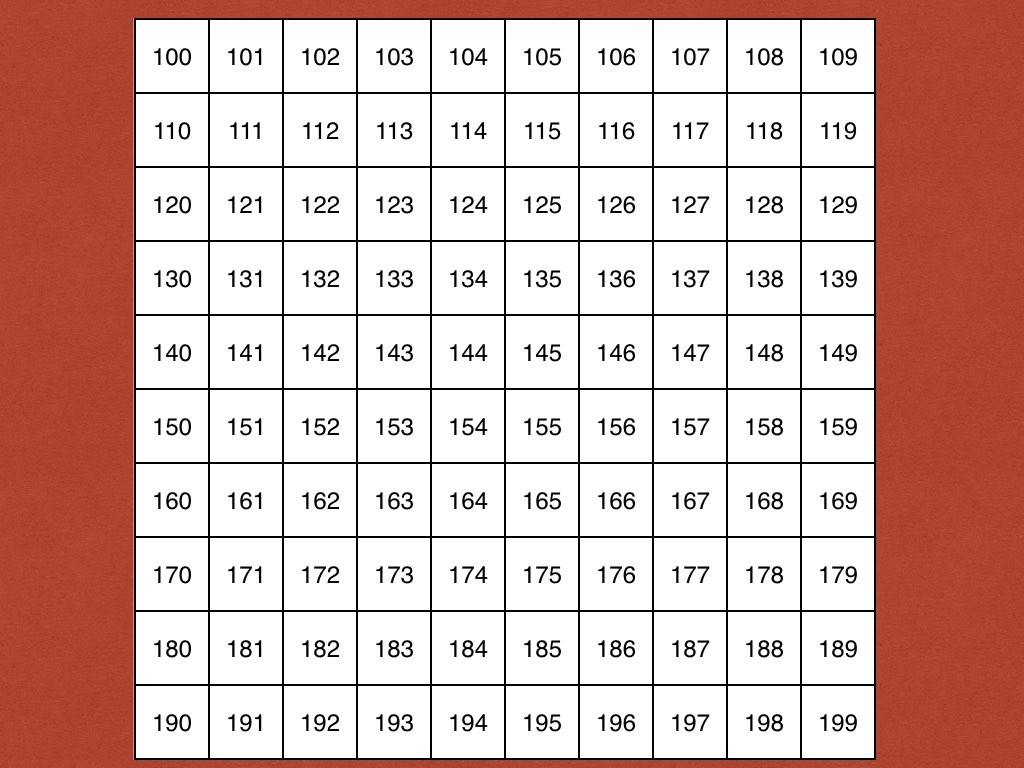

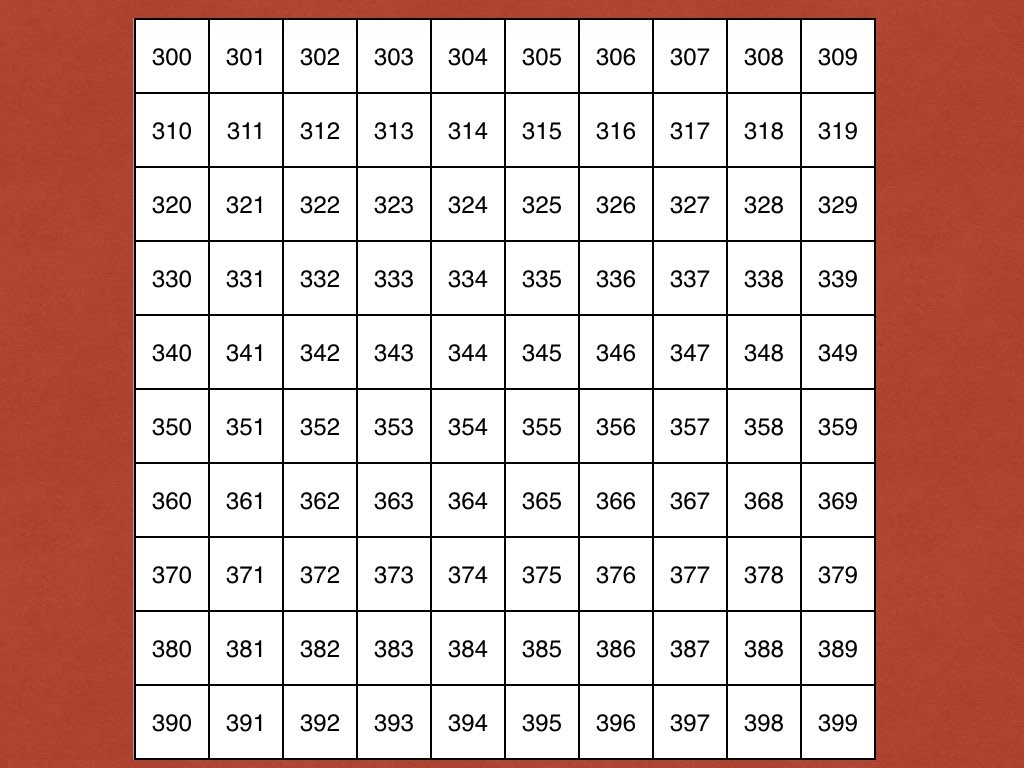
Recommended: The 0-99 wall chart is good because it emphasizes zero, and each row has the same number of 10s. An improved version of this 0-99 sheet can be downloaded here. This 0-999 pdf slide show is intended for projecting in full screen mode.
It is superior to the old 0-99 or 1-100 charts because you can go back and forth through the slides to add or subtract 100... Choose a number like 27. To increase by one - go right. To increase by 10 go down. To increase by 100 go to the next slide.
It is also superior because it not only gives a standard page listing the first numbers as 1, 2, 3, 4, ... but another slide listing them as 01, 02, 03, 04 ... This allows you to explain to students that there are zero tens. When students are ready to go beyond 100, I've added yet another slide 000-099 so that they can see there are zero hundreds. Lead zeros in all cases are faded so that students understand that these zeros are implied and do not need to be written.
You may think 0-999 is much more difficult for students to learn, but although it is a bit more difficult it is worth the effort - even in grade 1 for students to at least have a glimpse of numbers like 480. This was not true in the last century. Then the 0-99 wall chart was as good as we could do. Our classroom projectors now allow us to do 0-999 effortlessly and students will gain a lot of understanding of our number system by stepping forward and back by 1s... forward and back by 10s... forward and back by 100s.
In the pdf, I've included a guessing game to play with your students.
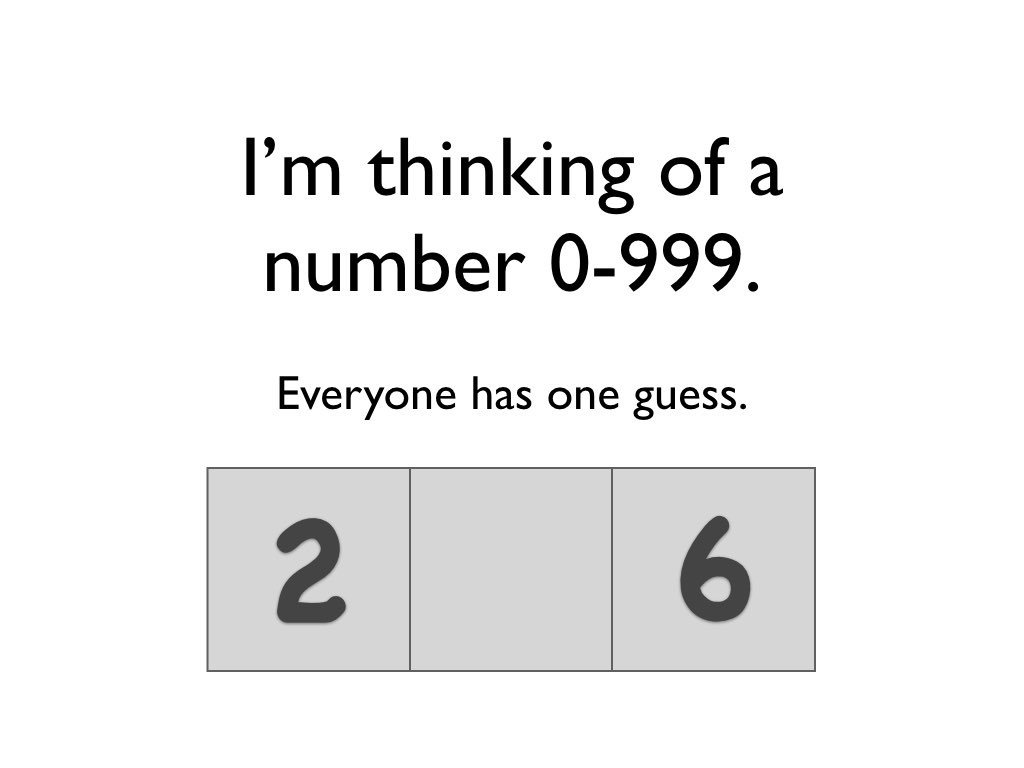
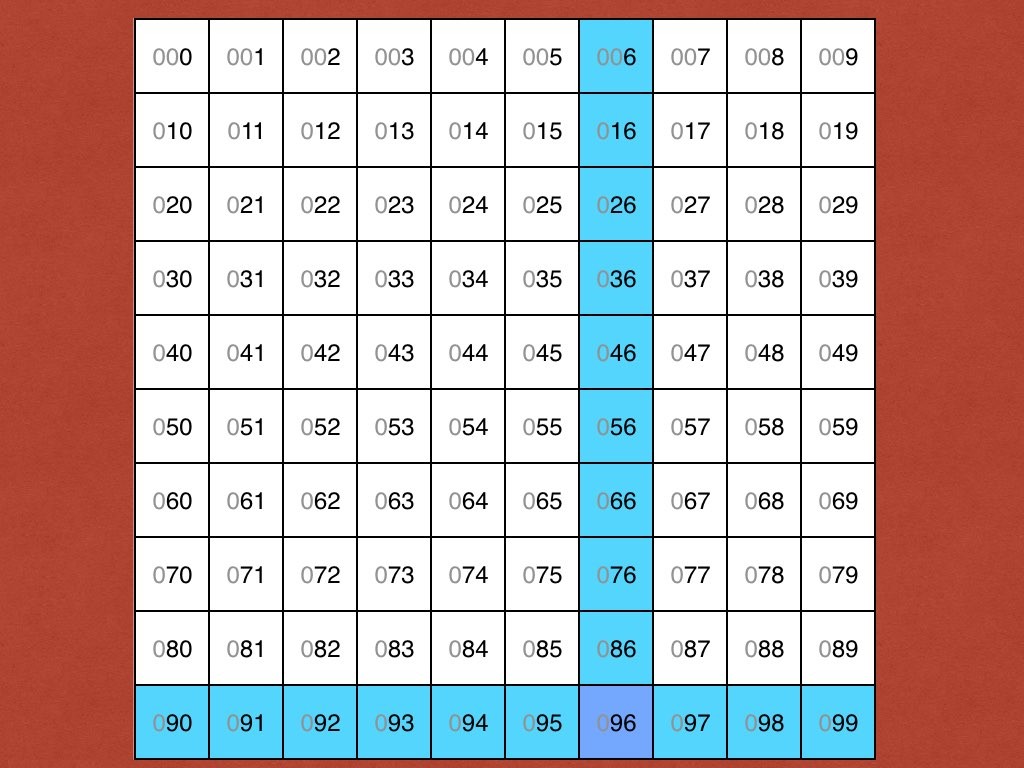
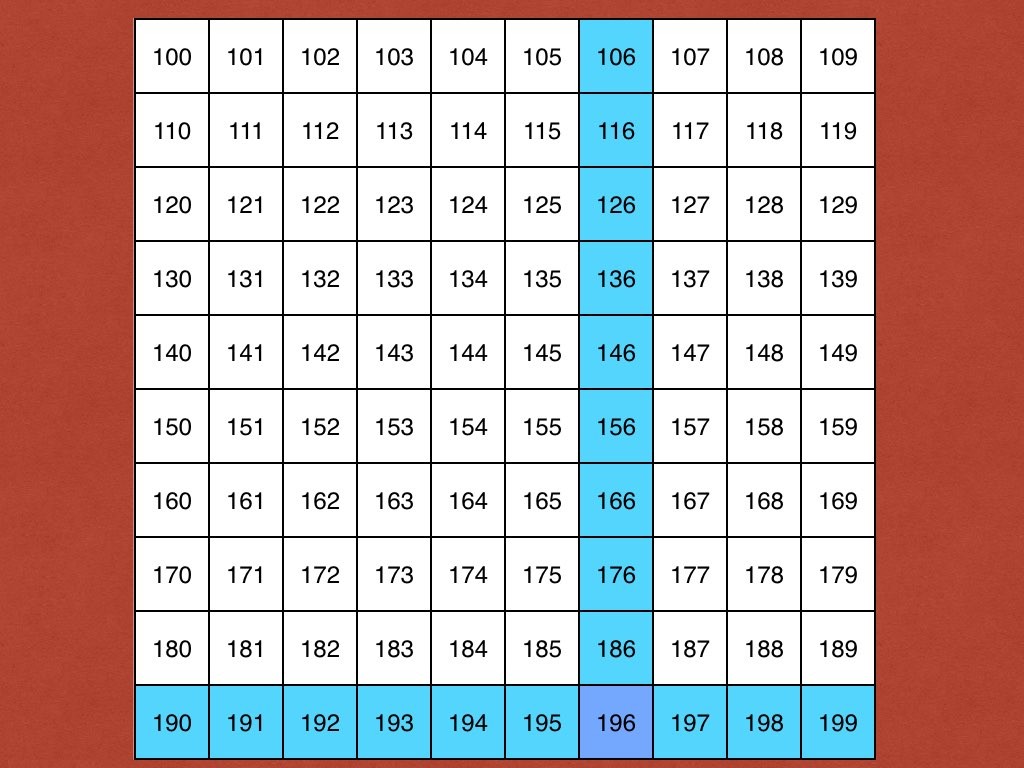
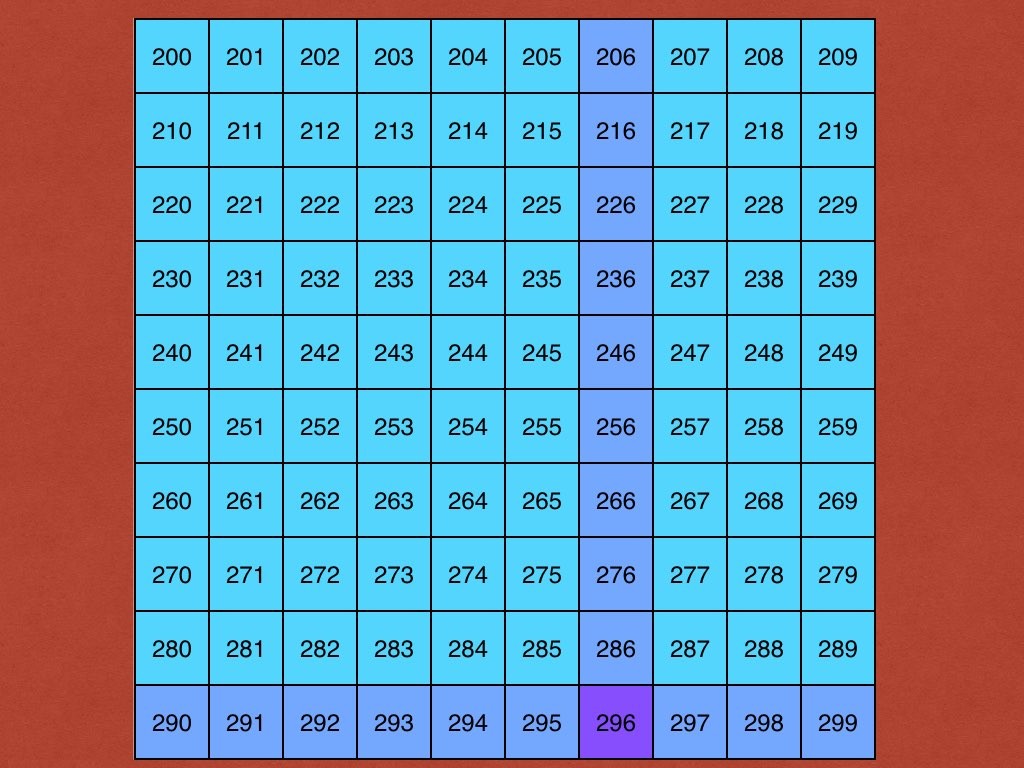
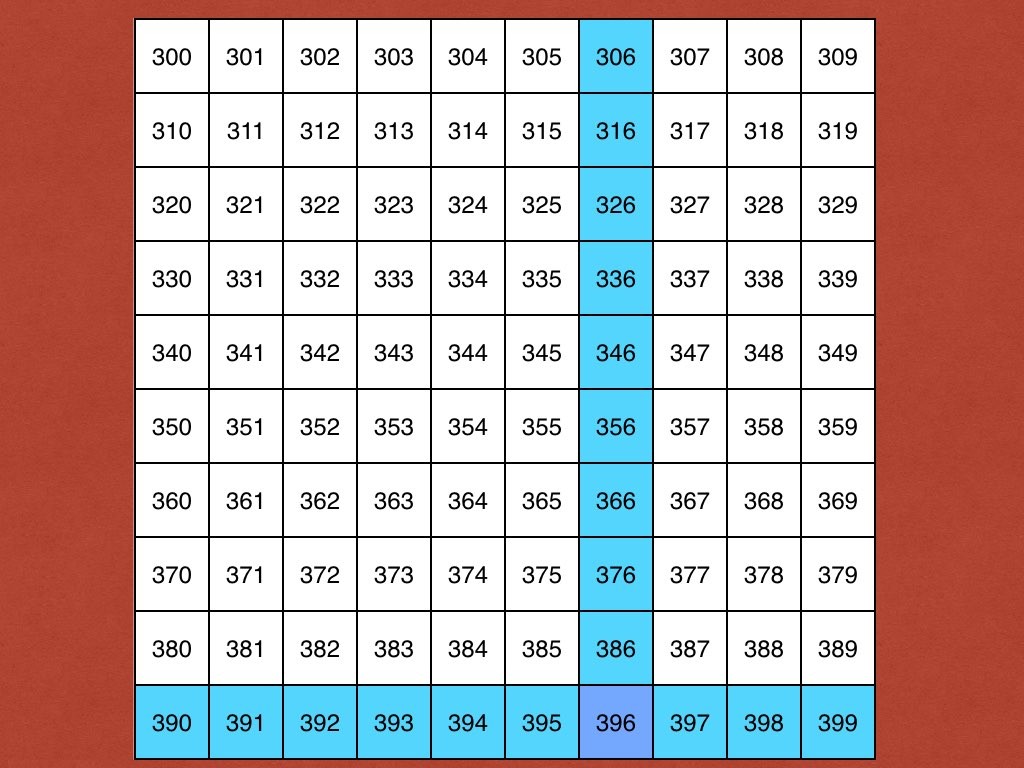
Recommended: The abacus is the other top method of teaching number sense. It is superior to the 1-100 wall chart method used in North America because:
- It extends to 100s and thousands and millions effortlessly.
- It gives children a number image that is not arbitrary ("13" does not look like *************, but we in the West expect children to visualize "13" when they think of 13 objects. The abacus student probably visualizes the abacus with one bead worth 10 and 3 beads worth 1.)
Not Recommended: This finger system also emphasizes the base 10 structure of our number system. The biggest problem with it is the dexterity requirement. Try to count really quickly and your class and you will end up in giggles.
Apart from the dexterity liability, the technique is good for addition and subtraction because the structure of the system makes adding and subtracting by 10 easy. It is really a finger abacus for those who can't afford or don't want to walk around with the real thing.
Another advantage is that zero can also be emphasized as concretely in this system as with the abacus.
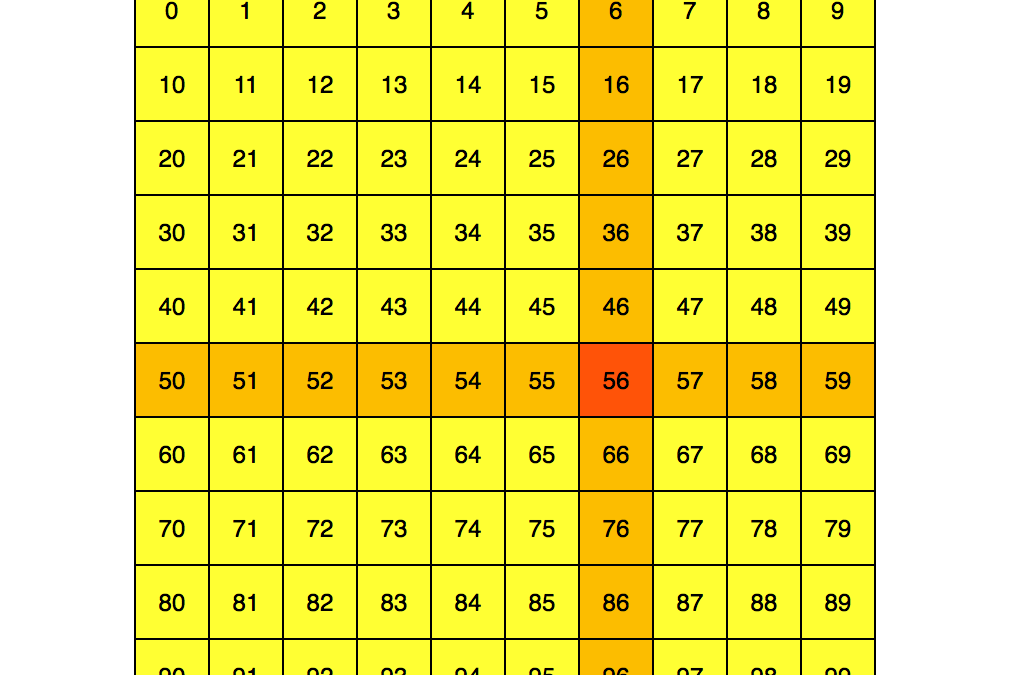
Good post. I learn something totally new and challenging on blogs I stumbleupon on a daily basis. It will always be helpful to read articles from other writers and practice something from other sites. |